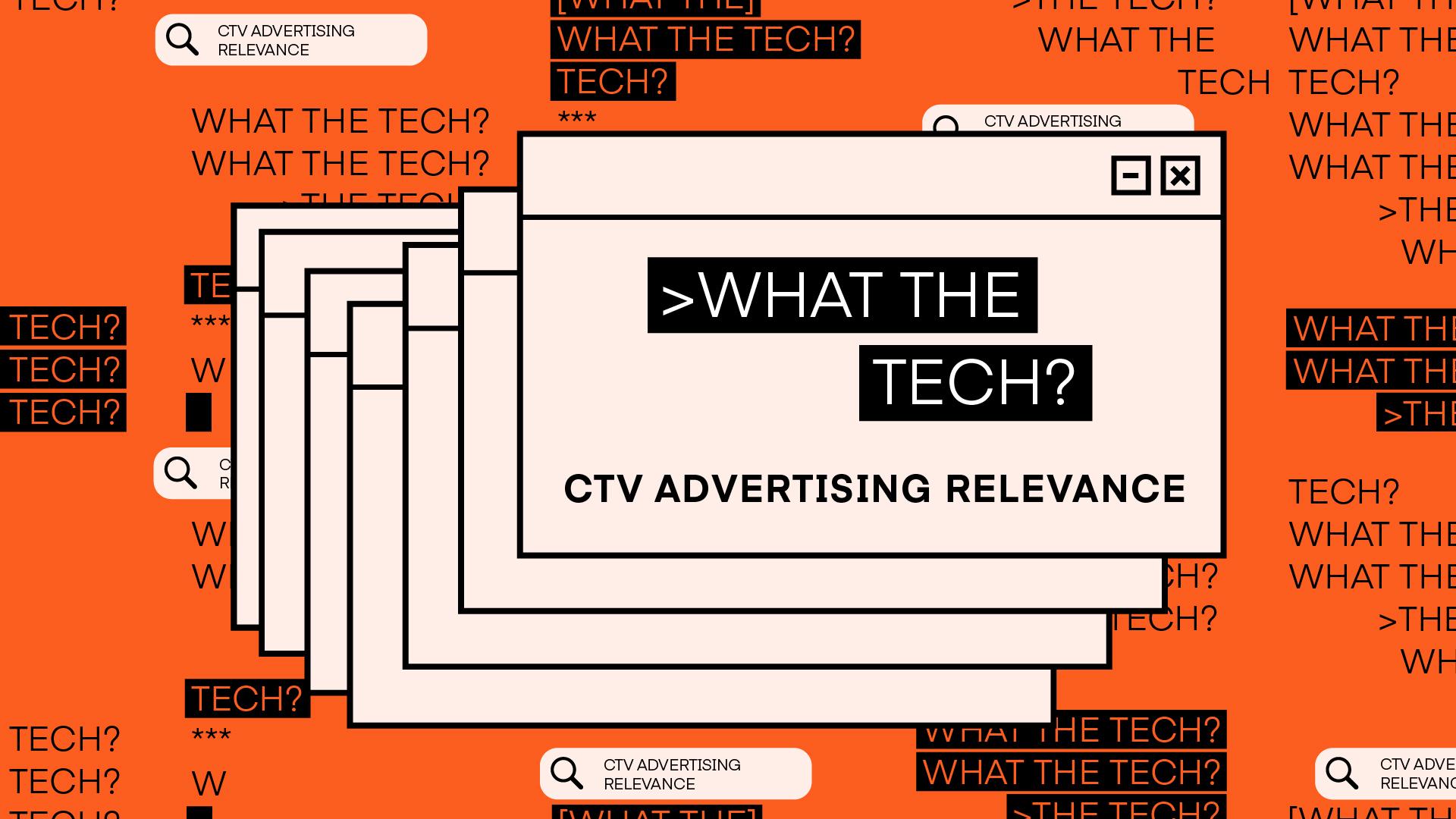What the Tech is CTV advertising relevance?
How to build and target audiences and measure performance in digital television.

For decades, broadcast television — ya know, the network and cable programs you’d have to tune into live if you wanted to see them — has been the preeminent force in media and advertising. It’s the medium people spend the most time consuming and thus the medium advertisers spend the most money on.
But broadcast television (also known as linear television) viewers are also now embracing is connected television, the new, streaming method for accessing television content. The amount of time people spend watching connected TV grew significantly during the pandemic, while time spent watching live linear TV decreased, as more viewers enjoyed the convenience of on demand streaming while spending more time at home.
This trend has enormous implications for one of the most important components of advertising: relevance. Here’s an overview of what makes connected TV advertising relevance distinct and why it’s so important for the present and future states of advertising.
Refresh my memory — what’s connected TV again?
As we’ve covered before, connected TV is TV content that people access through either an internet-enabled television set (commonly known as a “smart TV”) or a streaming device, such as an Amazon Firestick, Apple TV, Chromecast or Roku. Whether you’re bingeing The Boys on Amazon Prime or live-streaming the NBA Playoffs on TNT’s Apple TV app, you’re watching connected TV.
As the latter example shows, there’s some natural overlap between connected and linear television. In many cases, connected TV simply means watching a traditional TV broadcast through a connected TV device.
And advertising relevance is…?
Relevance is the method by which an advertiser identifies and advertises to its target audience.
Let’s use an example. Say a cereal brand is launching a new advertising campaign. The brand has identified two target markets for the campaign:
- Children, who will ostensibly eat the cereal
- Parents, the people who will actually buy the cereal at the grocery store
Now that the target markets have been determined, the brand needs to devise a strategy to serve the campaign to both groups. To reach the children, the cereal brand buys commercial time during popular children’s TV shows. And to reach the parents, the brand runs commercials on HGTV and banner ads across a host of parenting websites.
That’s relevant advertising, baby. And the promise of relevant advertising is that the more relevant it is, while respecting consumer privacy, the more valuable it is to the advertiser, the less advertising the consumer will have to watch in exchange for free content.
What’s special about advertising relevance with connected TV?
Just like measurement is more accurate on connected TV than it is on linear, so is relevance.
Connected TV allows advertisers to incorporate TV advertising into their multi-channel digital campaigns (finally). For years, advertisers have been able gather information about people’s preferences across the web and show them with ads more in tune with those preferences. If you’re a golf enthusiast, perhaps you’ll see more ads for the latest clubs and teaching aids. And because it is digital, Connected TV brings that capability to the TV set.
Connected TV also allows for a process known as “retargeting”. Say a person is in the market for car insurance. The person goes online, researches different insurance providers, and gets a few free quotes, but ultimately decides to hold off before purchasing a new insurance plan. With connected TV, an insurance brand can serve an ad to that very same person the next time they fire up Hulu. And maybe that ad convinces the person to go ahead and buy the insurance plan they previously considered.